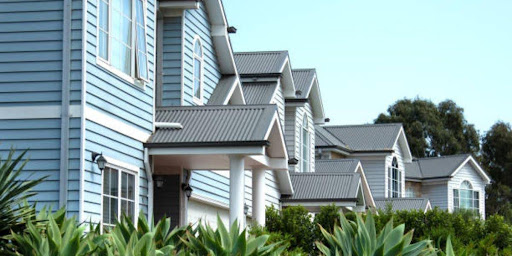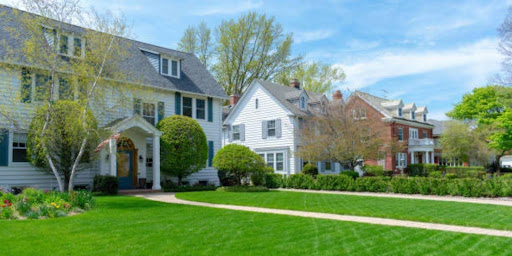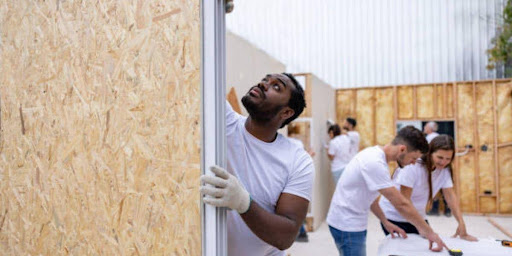Power Articles
Industry Elevating Content
Community-Focused Projects: Enhancing Neighborhoods Through Collaborative Exterior Renovations

PowerArticles
Mar. 4, 2024
Transforming neighborhoods requires more than just renovating individual homes; it demands a community-focused approach that fosters collaboration and unity. Exterior home remodeling companies play a vital role in this process by spearheading projects that enhance the aesthetic appeal, functionality, and overall livability of entire neighborhoods. Through collaborative efforts, these projects not only revitalize the exterior appearance of homes but also create spaces that promote interaction, safety, and pride among residents. By prioritizing community needs and engaging with local stakeholders, exterior remodeling companies can contribute significantly to the transformation of neighborhoods into vibrant, welcoming, and sustainable environments for all.
Understanding Community Needs
Researching Neighborhoods
Before embarking on any exterior renovation project within a community, it’s crucial for remodeling companies to conduct thorough research. This involves understanding the unique characteristics and needs of the neighborhood. By delving into factors such as architectural styles, historical significance, and demographic makeup, companies can tailor their renovation plans to suit the specific context of the community. Researching neighborhoods also entails gathering information on existing infrastructural challenges, environmental considerations, and any regulations or guidelines governing renovations in the area.
Identifying Common Issues
Once armed with a comprehensive understanding of the neighborhood, remodeling companies can proceed to identify common issues affecting the community’s exteriors. These issues may range from structural deficiencies and deterioration to outdated designs or lack of accessibility features. By pinpointing these challenges, companies can prioritize the areas in most urgent need of renovation and devise targeted solutions that address the collective concerns of residents.
Engaging with Residents
Effective communication and community engagement are fundamental to the success of community-focused exterior renovation projects. Remodeling companies should actively involve residents throughout the planning process to ensure their voices are heard and their needs are met. This may involve organizing neighborhood meetings, conducting surveys, or establishing advisory committees comprised of local stakeholders. By fostering open dialogue and collaboration, companies can gain valuable insights, build trust within the community, and cultivate a sense of ownership among residents towards the renovation efforts.

III. Benefits of Community-Focused Projects
1. Improved Aesthetics
One of the primary benefits of community-focused exterior renovation projects is the enhancement of aesthetics within the neighborhood. By revitalizing outdated or deteriorating exteriors, these projects contribute to the overall visual appeal of the community, creating a more attractive and welcoming environment for residents and visitors alike. Improved aesthetics can instill a sense of pride and identity within the neighborhood, fostering a positive perception of the area and encouraging further investment in local properties.
2. Increased Property Values
In addition to enhancing aesthetics, community-focused renovation projects can have a significant impact on property values within the neighborhood. By improving the condition and appearance of homes, these projects can boost curb appeal and desirability, thereby increasing the market value of surrounding properties. Higher property values not only benefit individual homeowners but also contribute to the economic vitality of the community as a whole, attracting potential buyers and investors and stimulating local real estate markets.
3. Strengthened Community Bonds
Perhaps the most valuable outcome of community-focused renovation projects is the fostering of stronger bonds and social cohesion within the neighborhood. Through collaborative planning and engagement efforts, residents have the opportunity to come together, work towards a common goal, and build meaningful connections with one another. These projects create a sense of shared ownership and pride in the community, fostering a supportive and interconnected network of neighbors who are invested in each other’s well-being and the overall vitality of their neighborhood.

IV. Collaborative Planning Process
A. Involving Residents in Design Decisions
Central to the collaborative planning process is the active involvement of residents in design decisions. By soliciting input and feedback from the community, remodeling companies can ensure that renovation plans reflect the preferences and priorities of those who will be directly impacted by the changes. Whether it’s selecting materials, choosing color schemes, or determining architectural features, residents should have a meaningful say in shaping the aesthetics and functionality of their neighborhood’s exteriors.
B. Establishing Budgets and Timelines
Collaborative planning also entails establishing clear budgets and timelines for renovation projects. By transparently outlining the financial resources available and the anticipated timeline for completion, companies can manage expectations and facilitate informed decision-making among residents. Establishing realistic budgets and timelines is essential for ensuring the feasibility and success of the projects while minimizing disruptions to the community.
C. Securing Necessary Permissions and Permits
Finally, collaborative planning involves navigating the regulatory landscape and securing necessary permissions and permits for renovation projects. Remodeling companies must work closely with local authorities and adhere to applicable zoning regulations, building codes, and permitting requirements. By proactively addressing these logistical considerations and obtaining the requisite approvals, companies can ensure compliance with legal standards and mitigate potential delays or complications during the implementation phase of the projects.

Selecting Suitable Exterior Renovations
Enhancing the appeal of a community through exterior renovations involves careful consideration of various factors to ensure the improvements are both impactful and sustainable.
Examples of Renovations That Enhance Community Appeal
When aiming to enhance community appeal, exterior renovations should prioritize projects that not only improve the aesthetics of individual homes but also contribute to the overall beauty and functionality of the neighborhood. Examples of such renovations include:
- Landscaping Enhancements: Beautifying the green spaces around homes with well-maintained gardens, flower beds, and trees can significantly enhance the visual appeal of a neighborhood.
- Exterior Painting: A fresh coat of paint can breathe new life into homes, creating a cohesive look throughout the community while allowing homeowners to express their individual style.
- Entryway Upgrades: Improving the appearance of entryways through features like new doors, porch additions, or decorative lighting can create a welcoming atmosphere for residents and visitors alike.
Considering Environmental Sustainability
In today’s environmentally conscious world, it’s essential for exterior remodeling projects to consider sustainability. This involves choosing materials and methods that minimize environmental impact and promote energy efficiency. Some considerations include:
- Energy-Efficient Windows and Doors: Installing windows and doors with high energy efficiency ratings can help reduce heating and cooling costs for homeowners while also decreasing their carbon footprint.
- Sustainable Building Materials: Opting for sustainable materials such as recycled wood, low-VOC paints, and eco-friendly roofing materials can lessen the environmental impact of renovation projects.
- Water Conservation: Implementing features like rainwater harvesting systems or drought-tolerant landscaping can help conserve water resources and promote sustainability within the community.
Ensuring Long-Term Durability
To ensure that exterior renovations stand the test of time, it’s crucial to prioritize durability and quality craftsmanship. This involves:
- Investing in Quality Materials: While it may be tempting to cut costs by opting for cheaper materials, investing in high-quality materials upfront can save money in the long run by reducing the need for frequent repairs and replacements.
- Proper Installation: Ensuring that renovations are properly installed by skilled professionals is essential for their longevity. Cutting corners during the installation process can lead to premature wear and deterioration.
- Regular Maintenance: Encouraging homeowners to perform regular maintenance on their renovated exteriors, such as cleaning gutters, sealing cracks, and inspecting for signs of damage, can help prolong the lifespan of the renovations and preserve the community’s aesthetic appeal.

III. Engaging Local Resources and Expertise
Collaborating with local contractors, suppliers, community organizations, and volunteers is key to the success of community-focused exterior renovation projects.
A. Working with Local Contractors and Suppliers
Partnering with local contractors and suppliers not only supports the local economy but also ensures that professionals familiar with the area’s building codes and regulations are involved in the project. Local contractors and suppliers can provide valuable expertise and resources, contributing to the success and efficiency of the renovations.
B. Leveraging Community Organizations and Volunteers
Community organizations and volunteers can play a significant role in exterior renovation projects by providing additional manpower, resources, and support. Engaging with local neighborhood associations, youth groups, or nonprofit organizations can help mobilize volunteers and garner community support for the renovations.
C. Seeking Guidance from Urban Planners or Design Professionals
Seeking guidance from urban planners or design professionals can help ensure that exterior renovation projects align with broader community development goals and enhance the overall livability and sustainability of the neighborhood. Urban planners and design professionals can provide valuable insights and recommendations for creating cohesive and well-designed exterior spaces that benefit the entire community.
Implementation and Execution
Successful implementation and execution of exterior renovation projects require careful coordination, communication, and problem-solving.
Coordination of Construction Activities
Effective coordination of construction activities is essential to minimize disruptions to residents and ensure that renovations are completed in a timely manner. This involves developing a comprehensive project plan, scheduling construction activities strategically, and maintaining open lines of communication with all stakeholders involved.
Addressing Potential Challenges
Anticipating and addressing potential challenges that may arise during the renovation process is crucial for overcoming obstacles and keeping the project on track. Whether it’s inclement weather, supply chain disruptions, or unexpected issues with permits or regulations, having contingency plans in place can help mitigate risks and prevent delays.
Maintaining Open Communication with Residents
Maintaining open communication with residents throughout the renovation process is essential for fostering transparency, addressing concerns, and building community trust. Providing regular updates, soliciting feedback, and being responsive to residents’ needs and preferences can help ensure that the renovation project is well-received and positively impacts the neighborhood as a whole.
Conclusion
In conclusion, community-focused projects that emphasize collaborative exterior renovations play a vital role in enhancing neighborhoods. By working together with residents, local authorities, and exterior home remodeling companies, these initiatives can revitalize communities, improve curb appeal, and foster a sense of pride among residents. Through effective communication, thoughtful planning, and a commitment to quality workmanship, exterior remodeling companies can make a meaningful impact on the overall appearance and livability of neighborhoods.
Published By
PowerArticles
Mar. 4, 2024